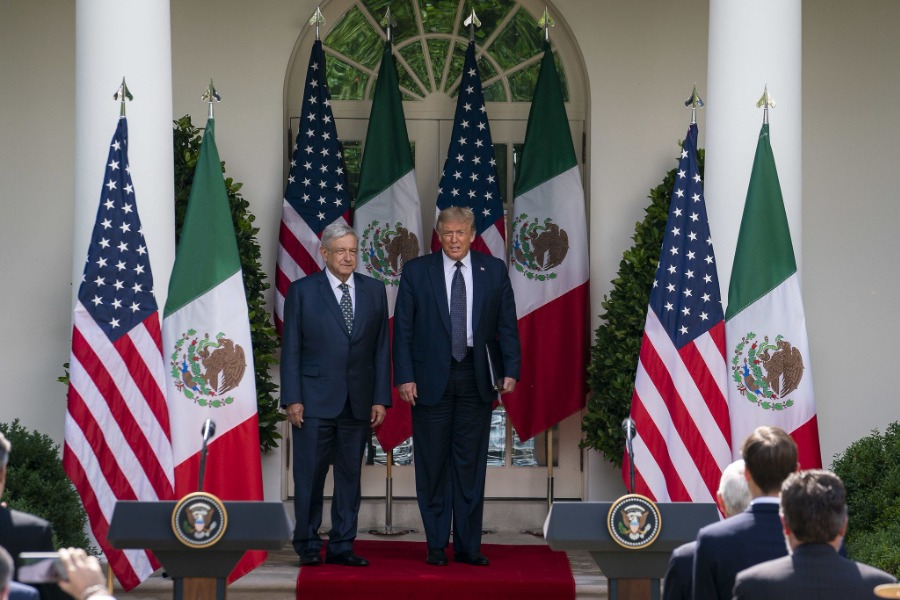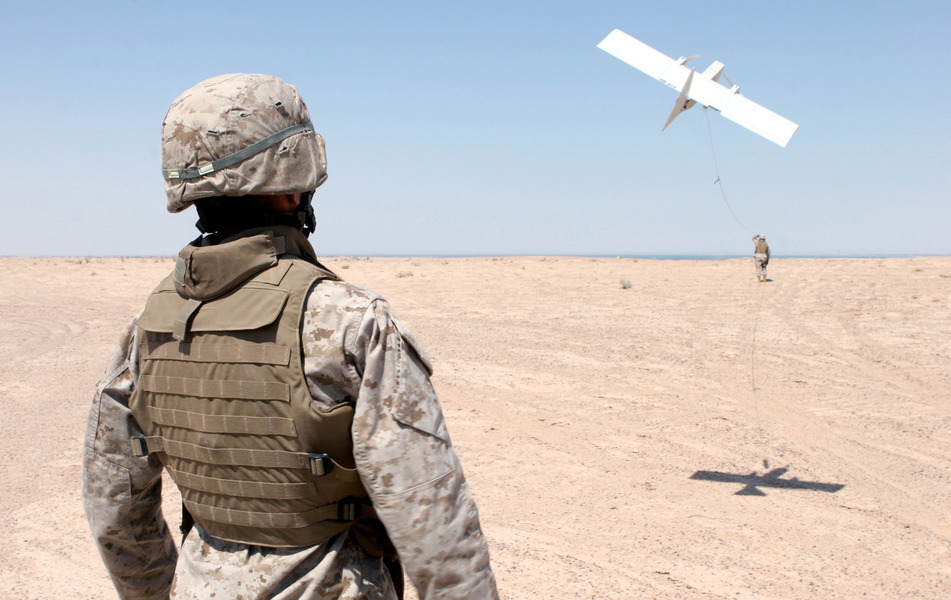The Legal Basis for the Mughniyah Killing
The Washington Post and Newsweek report that the CIA in 2008 worked with Israel’s Mossad to kill Imad Mughniyah, Hezbollah’s operations chief, in Damascus, Syria. The Post says that Mughniyah “had been implicated in the killing of hundreds of Americans, stretching back to the embassy bombing in Beirut [in 1983] that killed 63 people, inclu
Published by The Lawfare Institute
in Cooperation With

The Washington Post and Newsweek report that the CIA in 2008 worked with Israel’s Mossad to kill Imad Mughniyah, Hezbollah’s operations chief, in Damascus, Syria. The Post says that Mughniyah “had been implicated in the killing of hundreds of Americans, stretching back to the embassy bombing in Beirut [in 1983] that killed 63 people, including eight CIA officers,” and that U.S. officials believed he was “directly connected to the arming and training of Shiite militias in Iraq that were targeting U.S. forces” via “suicide bombings and IED attacks.” It also says that the “attorney general, the director of national intelligence, the national security adviser and the Office of Legal Counsel at the Justice Department all signed off on the operation.” Here is a quick sketch of how I think the U.S. government justified the action (with almost no attempt to resolve hard questions, in part because the relevant facts – about the nature of the threat, and about the role of Syria – are largely unknown).
What is the domestic law basis for the attack? Answer: The President’s power to take self-defensive action under Article II. Mughniyah had long targeted Americans and the Bush administration concluded that he posed “a continuing threat to Americans,” according to a USG official in the Post, who added that “[t]he decision was we had to have absolute confirmation that it was self-defense.” The President has clear authority under Article II to take action in this context. (He might also have gleaned some authority from the 2002 AUMF, but I think any such reliance would have been secondary to Article II.) The Post says the “authority to kill Mughniyah required a presidential finding by President George W. Bush (but Newsweek says the original finding might date to the Reagan administration.) Thus the killing was part of a covert action governed by 50 USC 3093. In a nutshell, that means that (a) the President “intended that the role of the United States Government will not be apparent or acknowledged publicly,” (b) the President made a written finding with certain representations, including that the action would not “violate the Constitution or any statute of the United States,” and (c) the DNI reported the finding to the intelligence committees (or, in case of “extraordinary circumstances affecting vital interests of the United States,” the “Big 8” senior congressional leaders). Although the covert action statute was integral to the action, the Bush administration still likely relied on Article II as the primary basis of authority for the action. There is a question whether the covert action statute alone can authorize a lethal action like this, absent an Article II basis or some independent statutory basis (like the AUMF, or perhaps the super-vague “fifth function,” now codified in 50 USC 3036(d)(4)), but there would be no need to face that question in this case.
What about the assassination ban? Section 2.11 of E.O. 12,333 provides: “No person employed by or acting on behalf of the United States Government shall engage in, or conspire to engage in, assassination.” The government probably determined that this provision did not apply because actions properly taken in self-defense are not assassinations for these purposes. The Post says that the killing of Mughniyah reflects “a philosophical evolution within the American intelligence services that followed the Sept. 11, 2001, attacks” with regard to assassination. I think this is wrong, or misleading. The almost-exactly-on-point precedent for the action in 2008 is the Clinton-era covert action to capture or kill Osama Bin Laden in 1998. As James E. Baker, who was the legal advisor to the National Security Council in 1998, explained in his book In the Common Defense, “the targeting of legitimate military targets consistent with the law of armed conflict is not considered ‘assassination’ under [EO 12.333].” As Baker described the administration’s deliberations in 1988:
[The lawyers concluded that] the United States could, and as a matter of legal policy should, lawfully respond to the threat [from Osama Bin Laden] within the framework of the Law of Armed Conflict (LOAC). In other words, the United States faced an imminent threat of attack and might appropriately respond in anticipatory self- defense using the full array of military and intelligence instruments available to the president as commander in chief. That meant that Osama Bin Laden (then referred to as UBL) and his organization were legitimate military targets. It also meant that in combating this enemy the United States must otherwise adhere to the law of armed conflict including the principles of necessity and proportionality in the use of force. The attorney general agreed.(Note that in the case of the killing of Anwar Al-Awlaki, which the Post mentions, the assassination ban was obviously not relevant because Al-Awlaki was deemed an operational leader of Al Qaeda in the Arabian Peninsula, a group against whom we were in a congressionally authorized armed conflict. In the case of Mughniyah, the United States was (presumably) not in an armed conflict – but see below – and so the self-defense rationale was vital.) What about the U.N. Charter’s prohibition on the use of force? The administration probably concluded that the action was an exercise of the “inherent right of individual . . . self-defence” under Article 51 of the U.N. Charter, either because Hezbollah’s or Mughniyah’s actions (and ongoing threats) were attributable to the government of Syria, or because the government of Syria was “unwilling or unable” to control the threat posed by Hezbollah or Mughniyah. What about the law of armed conflict? The Post gives some detail about the precautions that the CIA used to prevent collateral damage on civilians, and to comply with the other elements of the law of armed conflict. Mary Ellen O’Connell says in the Post that the use of a car bomb was an act of perfidy that “violates one of the oldest battlefield rules.” Additional Protocol I to the Geneva Conventions, which the United States has not ratified, contains a standard definition of perfidy as “acts inviting the confidence of an adversary to lead him to believe that he is entitled to, or obliged to accord, protection under the rules of international law applicable in armed conflict, with intent to betray that confidence.” Classic examples of perfidy are raising a white flag to induce the adversary to let down its guard, or feigning incapacitation by wounds for the same end. It is not clear that the rules on perfidy apply in this context. One hard question is whether the United States and Hezbollah were in armed conflict (again, see below). Another problem is whether and (if so) how the ban on perfidy applies in non-international armed conflicts. Perfidy was excluded from Additional Protocol II (which concerns non-international armed conflicts), and the application of the prohibition on perfidy to non-international armed conflicts is contested, especially when the enemy target that renounces the laws of war is not obviously induced into relying on the protections of the laws of war. The matter is too complex to pursue further in this already too-long post, but I note that Richard Jackson concludes in his extensive analysis of the issue that “[t]here is little or no evidence of perfidy violations being prosecuted under international law in non-international armed conflicts, nor is there clear opinio juris by States on this matter.” Also, Marty Lederman has a good analysis of the difficulties of applying perfidy in a non-international armed conflict, in the context of the al-Nashiri case, here. Was the United States in an armed conflict with Hezbollah in 2008? It seems odd (or perhaps worse) to say “yes,” but the answer is unclear. One might think that the attack on Mughniyah in Syria, coming on the heels of Hezbollah past actions against the United States and its continuing actions and threats in Iraq, initiated (or continued?) an armed conflict. This appears to be how the Clinton administration conceptualized the attack on Bin Laden in 1998. The 9/11 Commission Report, citing the testimony of James Baker and 1998 OLC head Randy Moss, stated: "The administration's position was that under the law of armed conflict, killing a person who posed an imminent threat to the United States would be an act of self-defense, not an assassination." And Baker says in his book that the United States in 1998 “changed the legal paradigm against Osama Bin Laden to one of armed conflict.” This conclusion is consistent with the claim in the Al-Nashiri case that the United States armed conflict with al Qaeda began before 2001. Of course al Qaeda publicly declared war against the United States in 1996, and the nature and intensity of the pre-9/11 U.S.-al Qaeda conflict might have been different than the U.S.-Hezbollah conflict in 2008 (though the pre-9/11 conflict with al Qaeda was not obviously more intense). More broadly, many would contend that the requirements of intensity and duration in the non-international armed conflict context require more than the single U.S. strike following Hezbollah’s sporadic attacks on the United States. But what it requires precisely, and especially how it applied in a non-international armed conflict, are not clear.
Jack Goldsmith is the Learned Hand Professor at Harvard Law School, co-founder of Lawfare, and a Non-Resident Senior Fellow at the American Enterprise Institute. Before coming to Harvard, Professor Goldsmith served as Assistant Attorney General, Office of Legal Counsel from 2003-2004, and Special Counsel to the Department of Defense from 2002-2003.





